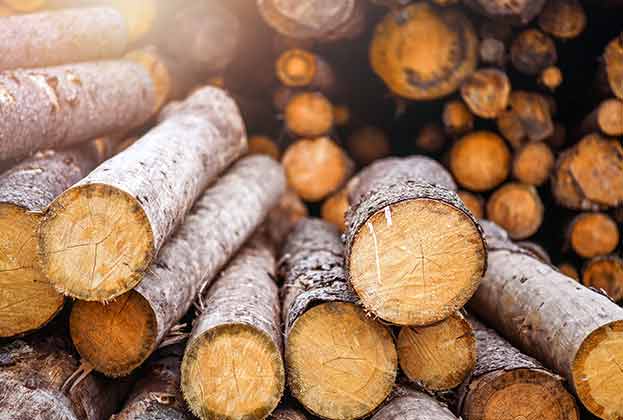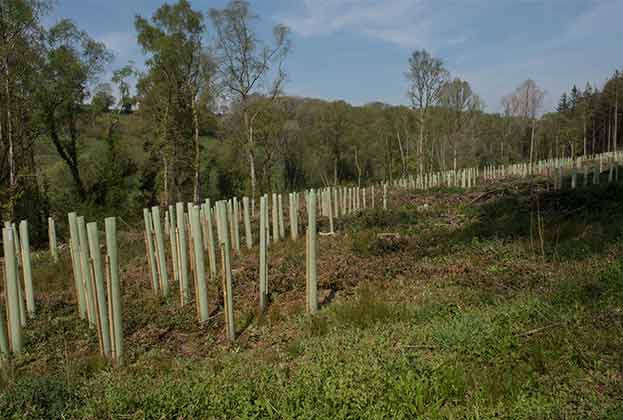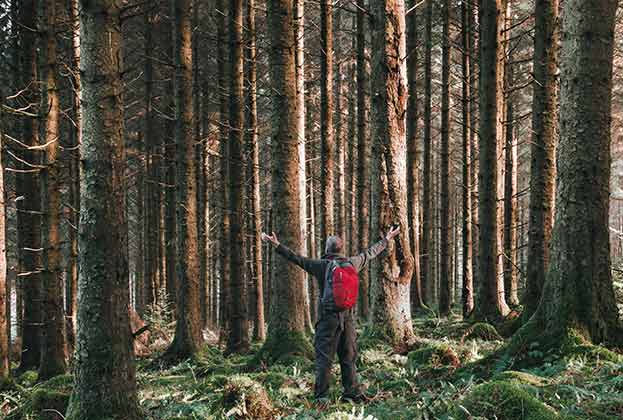Companies concerned about their climate impact are increasingly looking at woodland carbon offsetting
The reality of the climate crisis has sparked a race to net zero emissions across all sectors within the UK. Companies and organisations seeking to reach zero carbon impact start by reducing their procedural emissions and then look to offsetting for any residual emissions. Tree planting offers a nature-based solution to carbon offsetting. As trees grow, they sequester carbon through photosynthesis. This sequestration can be quantified and reported as an internal offset or “inset” for land managers, or it can be externally verified and sold to the voluntary carbon market as an offset.
Interest in the UK woodland carbon market has grown rapidly over recent years, presenting a new potential income stream for landowners
Nicola Buckingham, Associate Director, Rural Research
Interest in the UK woodland carbon market has grown rapidly over recent years, presenting a new potential income stream for landowners and generating demand for bare planting land.
Demand for woodland carbon
There are a number of factors behind the increasing demand for woodland carbon offsets. The legally binding net zero emissions target of 2050 for England and 2045 for Scotland has put pressure on policymakers and business to take their carbon impact seriously. This ambition is brought to reality through Climate-Related Financial Disclosure, which is increasingly becoming mandatory for all large companies and financial institutions in the UK, requiring them to be transparent about their climate risk. The growing demand for accountability, combined with increasing regulatory baselines and the threat of carbon taxes, means that companies are starting to address their carbon emissions. This has resulted in a surge of interest in woodland carbon offsetting.

Creating a carbon offset
In order to sell woodland carbon offsets, there are a number of key criteria that need to be satisfied. Firstly, the woodland creation needs to be verified as a legitimate carbon-sequestering project. Within the UK, the Woodland Carbon Code is the most commonly used scheme to do this. Secondly, it is essential that the woodland can prove additionality. This means that the carbon would not have been sequestered in the absence of a market for offset credits.
In other words, carbon income needs to be a key driver for planting the trees – the project cannot be financially viable without carbon income. This means deriving carbon income from commercial forestry can be difficult to justify. The trees have to be planted on new land, and the land manager cannot be under an obligation to plant – meaning land managers cannot sell the carbon from trees grown through restocking (for example, under the conditions of a felling licence). Trees sequester carbon at different rates depending on age and species, therefore woodland carbon credits can take time to generate.
Read the articles within The Forestry Market below.
.jpg)


